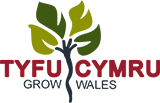Technical Advice Sheet: Peat-free Horticulture - How and Why?

Download the Toolkit: Peat-Free Horticulture.pdf
This technical advice sheet has been developed to accompany the Peat-free Horticulture Webinar which will took place on the 28th September 2020. You can catch-up on the webinar here:
An extract of the technical advice sheet is below, please download the full factsheet.
The Drive for Peat Free
The Government’s 25 Year Environment Plan, published in 2018, spelt out the ambition to gradually eliminate peat use with a final voluntary phase-out target for professional growers of fruit, vegetables and ornamental plants of 2030. The underlying driver is environmental; peatlands are significant carbon stores, draining of peatlands for agricultural use and harvesting peat releases carbon, which is a significant contributor to atmospheric greenhouse gases.
To replace peat, alternative raw materials must be found which are comparable with peat performance in containerised plant raising systems. By ‘raw materials’ we mean materials as supplied by growing media manufacturers, which have therefore already been processed to make them suitable for use as a growing media, for example washing, composting and grading. In addition, we focus on four broadly grouped types of materials which are currently commercially available and can be reliably sourced: wood fibre, coir (fibre from the outer husk of a coconut), bark and green compost, which are all renewable and primarily plant cell wall based.
Methodology
Growers and growing media manufacturers have long been aware of the need to reduce the reliance on peat, and diluting peat with up to 30% of a substitute material is common practice for some e.g. nursery stock producers. In other sectors, such as soft and cane fruit, the industry has switched to coir. Focussing on a single material does however expose the industry to price and availability issues and in fact there is insufficient coir available to meet UK or global demand. The reality is that materials will have to be mixed to create peat-free growing alternatives.
Attempting to blend different raw materials to create suitable growing substrates is not new. However, there is a core challenge: how to select the blend recipe? Often blends are the result of intuitive trial and error mixtures that are assessed via growing trials. But this is slow, expensive and can easily end in failure. At ADAS we have developed a strategy for a rational approach to growing media blending based on the physical properties of the materials. The objective is to reduce the number of trials needed, speed up the selection of viable new blends, and minimise new growing media product development costs. This strategy was based on the findings of a 5-year programme of work funded by Defra, AHDB Horticulture, growing media manufacturers and growers, in collaboration with Quadram Institute Bioscience and Stockbridge Technology Centre.
Irrigation
Peat-free materials can behave very differently to peat, and may require a ‘little and often’ approach to irrigation. The surface tends to dry out quite quickly, which can be misleading, as containers may appear to be dry when in fact there is adequate moisture below the surface. Take time to learn how the material behaves both in summer and winter, and consider weighing containers to begin with, to get a good understanding of when a container is sufficiently watered, and when it is too dry.
Nutrition
It is important to have a nutritional analysis completed on new batches of growing media, to ensure that your feeding regime corresponds to the needs of the crop. It is also important to monitor pH (acidity) and EC (electrical conductivity) throughout the growth cycle, to ensure these remain within range. If the EC is too high, this can result in plant injury or loss. If the pH is too low, macronutrients such as nitrogen become less readily available, which may result in older leaves exhibiting deficiency and yellowing. If pH is too high, selected micronutrients such as iron can become unavailable to plants, resulting in young leaves turning white.
Mechanisation
It is important to ensure your machinery (pot-filler, tray-filler etc.) is set-up correctly to suit the material that will be flowing through it. Blends that are more fibrous may require slight adjustments to the machinery, to ensure that material flow remains consistent and blockages do not occur.
Pests, diseases and weeds
The interaction of growing media selection with pests, diseases and weeds is potentially complex, but generally, if a growing media blend is well managed, there should not be any major issues. Materials with high available water can cause root-zone problems (root rots such as Pythium and Phytophthora or through Sciarid and Shore fly larvae feeding on roots), but this can be resolved through the inclusion of other materials with lower available water contents and careful irrigation management.
